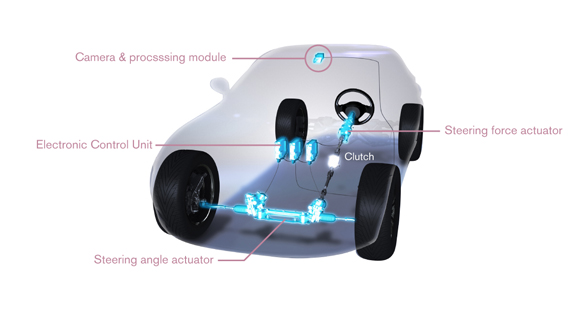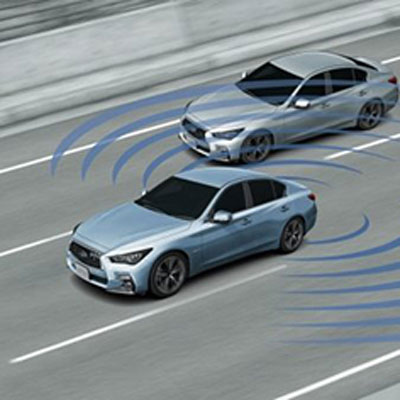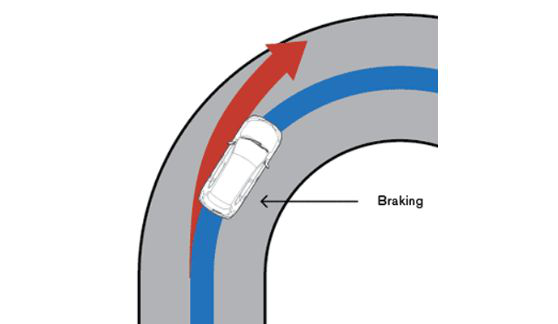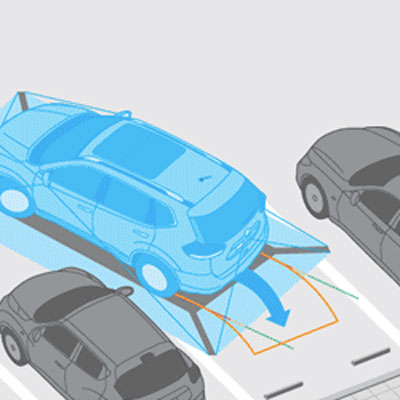Direct Adaptive Steering
New steering technology providing intuitive driving
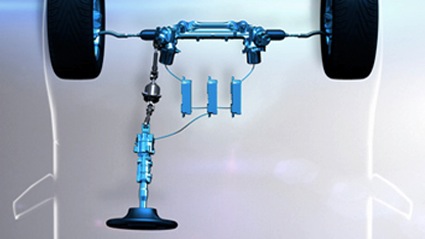
Direct Adaptive Steering transmits the driver’s steering inputs, moving the tires through translating the driver’s steering into electronic signals, and independently controlling the angle of the tires, and the steering force. The technology provides a sense of strong propulsion on a variety of road surfaces, and the feeling like you are directly touching the road.
For example, the technology is helpful on bumpy roads or bad road surfaces where the driver is forced to grip the steering wheel tightly. The amount of vibration transferred to the driver through the steering wheel is reduced, helping the driver to more easily maintain a straight line of travel.
When traveling along highways, the system automatically makes small adjustments to steering, reducing the need for manual steer inputs. This leads to a more confident and relaxed driving experience.
Technology Functionality
In prior systems the driver’s steering inputs were communicated mechanically. Now the Direct Adaptive Steering utilizes electronic signals and can transmit the driver’s steer inputs faster than a mechanical system. At the same time, the system communicates information from the road surface to the driver in a way that is faster and easier to understand.
The system communicates the driver’s steering inputs to the Electronic Control Unit (ECU). The ECU then converts the information to control signals for the Steering Angle Actuator, adjusting the cutting angle of the front tires. The road information, such as the force on the tires, is simultaneously communicated from the Steering Angle Actuator to the ECU, which then screens it and returns only the information necessary for driving back to the steering wheel.
For example, conventional steering systems communicate to the driver the oscillations when passing over roads with furrows, but Direct Adaptive Steering provides feedback on only the information necessary for driving.
Another major function of the Direct Adaptive Steering is the newly developed straight-line stability system. If the vehicle’s line of travel deviates from a straight path, the Direct Adaptive Steering enhances the car’s handling characteristics by producing fractional sensations of resistance as feedback from the steering, helping the driver keep a straight line of travel and reducing the need for course corrections in a smooth and natural way. The feedback is so subtle that a driver may not notice it.
Technology Configuration
Direct Adaptive Steering uses multiple ECUs to simultaneously monitor the vehicle’s operating condition. If a single ECU malfunctions, another ECU will instantly take control. In the event of power supply being disrupted, the backup clutch will engage, allowing operation by connecting the steering wheel and wheels mechanically. Direct Adaptive Steering was developed from the desire to have a system that directly links the steering and driver for an experience that feels like the driver’s hands and feet are spread around the outside of the vehicle, holding the car in their hands. The technology opens the door to new innovation such as Nissan’s EV concept car PIVO and its four-wheel independent steering.
